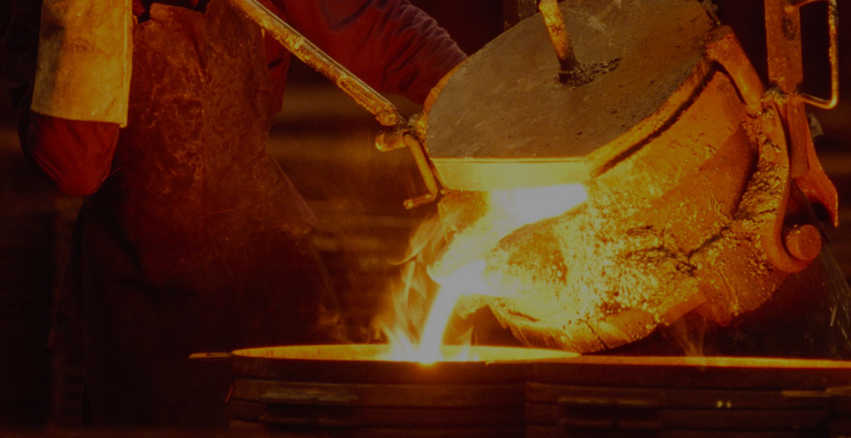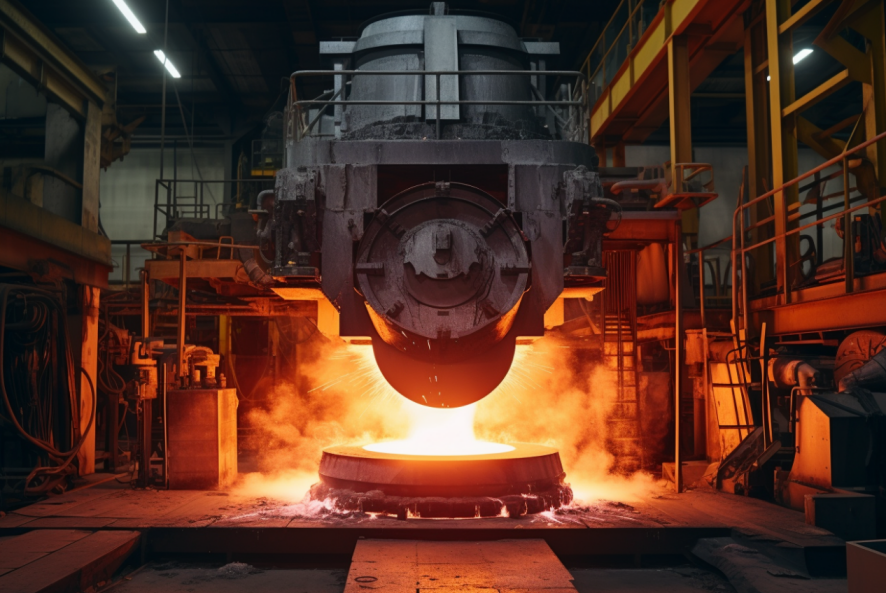Steel Scrap Melting Induction Furnace for Efficiency and Sustainability
Discover how steel scrap melting induction furnaces revolutionize steel production for efficiency and sustainability. Explore case studies, solutions to common challenges, and future trends in the industry. Learn how Taizhou Hongkang Electric Co., Ltd. leads the charge in innovative furnace technology for a greener, more efficient future.
Introduction to Induction Furnaces and Steel Scrap Melting
1.1 Understanding Induction Furnaces: A Modern Marvel
Induction furnaces stand as exemplars of innovation in the realm of steel production. Unlike traditional furnaces that rely on direct combustion, these marvels utilize electromagnetic induction to generate heat within the metal itself, revolutionizing the melting process. The result? Increased efficiency, reduced energy consumption, and precise temperature control make them indispensable in modern steelmaking.
1.2 Harnessing the Power of Steel Scrap
Steel scrap melting plays a pivotal role in sustainable steel production. By recycling scrap, steelmakers reduce reliance on virgin raw materials, curb energy consumption, and minimize environmental impact. This process not only conserves resources but also slashes emissions, aligning with global efforts towards a greener future.
1.3 Tracing the Evolution: A Brief History
The inception of induction furnaces dates back to the early 20th century. Initially utilized in laboratory settings, their potential for industrial application soon became evident. Over the decades, advancements in technology and materials have propelled these furnaces to the forefront of steelmaking, cementing their status as indispensable tools in the industry.
Types of Steel Scrap Suitable for Induction Furnaces
2.1 Exploring the Diversity of Steel Scrap
Steel scrap comes in various forms, each with its own set of characteristics and applications. From industrial offcuts to end-of-life vehicles, the spectrum of scrap sources is vast. Understanding the properties of different scrap types is crucial for optimizing the melting process and ensuring superior quality output.
2.2 Advantages and Disadvantages
- Ferrous Scrap:This includes clean, homogeneous steel scraps from manufacturing processes. While ferrous scrap melts readily and offers excellent recyclability, impurities such as coatings or contaminants can impact the quality of the final product.
- Shredded Scrap: Shredded scrap, derived from discarded automobiles and appliances, boasts high density and rapid melting rates. However, variations in composition and size distribution pose challenges in achieving consistent melt quality.
- Foundry Scrap: Foundry scrap encompasses castings, gates, and sprues from manufacturing processes. While readily available and often of high purity, the presence of complex shapes and alloys necessitates meticulous sorting to optimize melting efficiency.
2.3 Selecting the Right Scrap
When choosing steel scrap for induction furnace melting, factors such as composition, size, and cleanliness must be carefully considered. Optimal scrap selection not only enhances melting efficiency but also ensures the production of high-quality steel with minimal impurities.
Operating Principles of Induction Furnaces for Steel Scrap Melting
3.1 Demystifying Induction Furnace Operations
At the heart of an induction furnace lies the principle of electromagnetic induction. When alternating current passes through a copper coil, it generates a magnetic field, inducing eddy currents within the metal charge. These currents dissipate as heat, rapidly raising the temperature of the material and facilitating its melting.
3.2 Precision Temperature Control
Temperature regulation in induction furnaces is achieved through meticulous control of power input and frequency modulation. By adjusting these parameters, operators can tailor the heating process to suit the specific requirements of the steel being melted, ensuring optimal metallurgical properties and minimizing energy consumption.
3.3 Efficiency and Sustainability
Induction furnaces epitomize the marriage of efficiency and sustainability in steelmaking. By harnessing the power of electromagnetic induction and embracing steel scrap melting, manufacturers can significantly reduce their environmental footprint while simultaneously enhancing operational efficiency and product quality.
Efficiency and Sustainability in Steel Scrap Melting
4.1 Driving Forces for Efficiency and Sustainability
Efficiency and sustainability have become paramount in the steel industry, as manufacturers seek to minimize environmental impact while optimizing production processes. Steel scrap melting, particularly through induction furnaces, plays a pivotal role in achieving these dual objectives. By harnessing the energy inherent in scrap materials and employing innovative technologies, steelmakers can reduce energy consumption, emissions, and reliance on virgin raw materials.
4.2 Induction Furnaces: Pioneers of Efficiency
Induction furnaces stand as beacons of efficiency in steelmaking. Unlike conventional furnaces, which rely on fossil fuels for heat generation, induction furnaces utilize electromagnetic induction to directly heat metal charges. This method not only reduces energy wastage but also allows for precise temperature control and rapid heating rates, enhancing overall efficiency while minimizing environmental impact.
4.3 Exemplifying Sustainable Practices
Case studies abound showcasing the sustainable benefits of steel scrap melting with induction furnaces. For instance, a steel foundry in Europe successfully reduced its carbon footprint by over 30% through the implementation of induction furnace technology. By transitioning from coal-fired furnaces to induction melting, the foundry significantly decreased emissions while improving operational efficiency and product quality.
Challenges and Solutions in Steel Scrap Melting with Induction Furnaces
Despite their myriad benefits, induction furnaces encounter certain challenges in steel scrap melting. Variations in scrap composition, size, and cleanliness can affect melt quality and process efficiency. Additionally, issues such as refractory wear, power fluctuations, and electrode erosion pose operational hurdles that necessitate careful consideration and proactive management.
5.2 Innovative Solutions for Optimal Performance
To address these challenges, steelmakers implement a range of solutions and best practices. Meticulous scrap selection and sorting processes help mitigate impurities, ensuring consistent melt quality and minimizing downstream processing requirements. Advanced monitoring and control systems enable real-time adjustment of furnace parameters, optimizing energy utilization and enhancing overall productivity.
5.3 Embracing Technological Advancements
The relentless pursuit of efficiency and productivity drives continuous innovation in induction furnace technology. Recent advancements such as sensor integration, predictive analytics, and automation have revolutionized steel scrap melting processes, enabling precise control, predictive maintenance, and seamless integration with other manufacturing systems. These innovations not only enhance operational efficiency but also pave the way for further sustainability gains in the industry.
Future Trends in Steel Scrap Melting and Induction Furnaces
6.1 Charting the Path Forward
As the steel industry continues to evolve, several emerging trends are poised to shape the future of steel scrap melting and induction furnace technology. Increasing emphasis on circular economy principles is driving greater adoption of scrap recycling practices, leading to a shift towards closed-loop production systems and reduced reliance on virgin raw materials.
6.2 Anticipating Technological Evolution
The future of induction furnace technology holds promise for further efficiency gains and sustainability improvements. Advancements in materials science, process optimization, and renewable energy integration are expected to bolster furnace performance while reducing environmental impact. Additionally, the proliferation of digitalization and Industry 4.0 initiatives will enable seamless connectivity, data-driven decision-making, and enhanced resource utilization across the steelmaking value chain.
6.3 Partnering for Progress
As a leading manufacturer of induction furnaces, Taizhou Hongkang Electric Co., Ltd. is at the forefront of driving innovation and sustainability in steel scrap melting. With a steadfast commitment to excellence and a focus on customer-centric solutions, they are poised to play a pivotal role in shaping the future of the industry. By collaborating with stakeholders and embracing technological advancements, they stand ready to usher in a new era of efficiency, sustainability, and prosperity in steel production.
Conclusion
As pioneers in the field of induction furnace technology, Taizhou Hongkang Electric Co., Ltd. continues to spearhead innovations that redefine the boundaries of steel production. With a commitment to sustainability and excellence, they stand poised to shape the future of the industry, one melt at a time.


